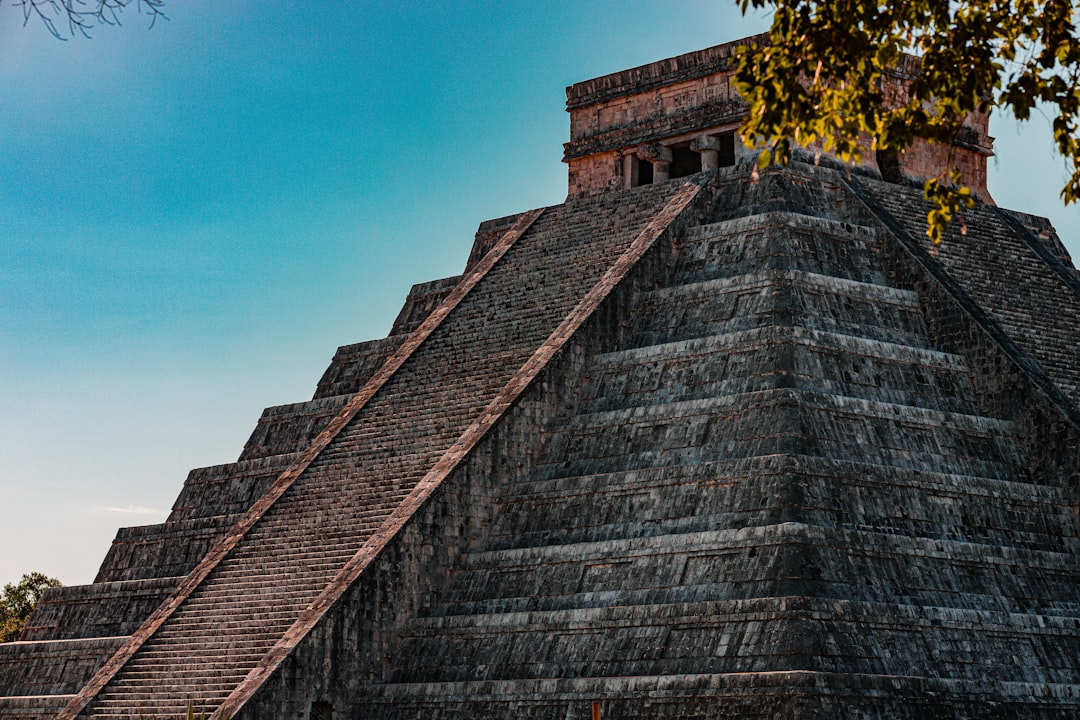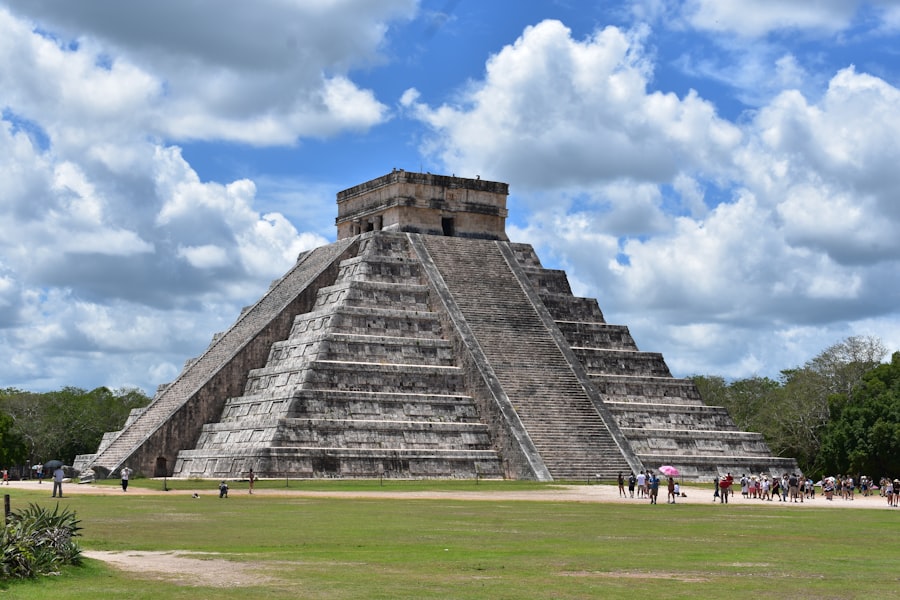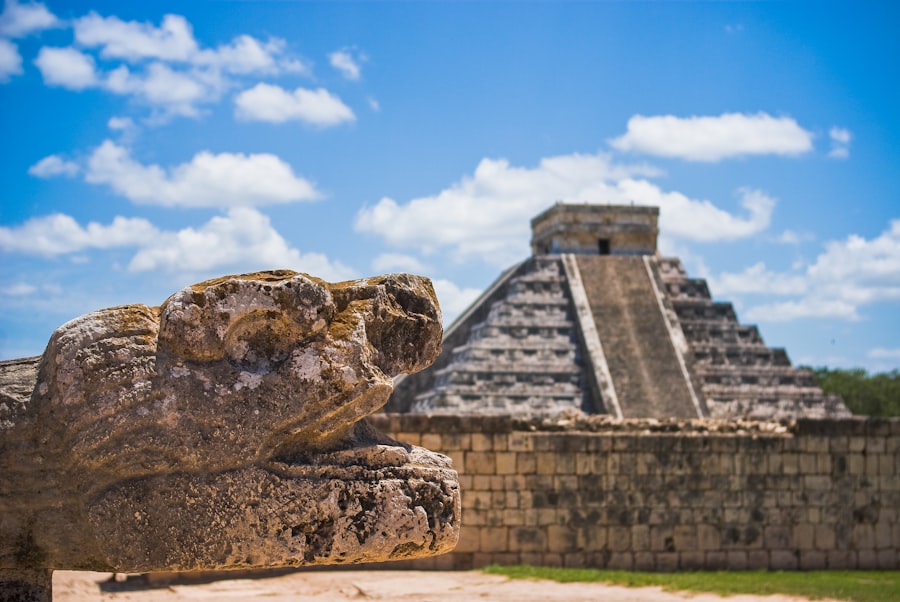
Mexico is a nation that pulsates with life, characterized by its rich history, diverse landscapes, and a culture that is as colorful as its famous festivals. Nestled between the United States to the north and Central America to the south, Mexico boasts a unique geographical position that has influenced its development over centuries. The country is a tapestry woven from the threads of ancient civilizations, colonial legacies, and modern innovations.
With a population exceeding 126 million, it is the most populous Spanish-speaking country in the world, and its cities are bustling hubs of activity, creativity, and tradition. The diversity of Mexico is not only evident in its people but also in its geography. From the arid deserts of the north to the lush jungles of the south, and from the stunning beaches along the Pacific and Caribbean coasts to the majestic mountains that traverse the country, Mexico offers a plethora of environments that cater to all kinds of travelers.
This geographical variety has fostered a multitude of ecosystems, each home to unique flora and fauna.
Key Takeaways
- Mexico is a vibrant and diverse country with a rich culture and traditions.
- Must-see places in Mexico include ancient ruins, modern cities, and natural wonders.
- The rich culture and traditions of Mexico are a major draw for tourists.
- Mexican cuisine offers a delicious culinary adventure with a variety of flavors and dishes.
- Mexico is home to natural wonders such as beaches, mountains, and diverse landscapes.
Must-See Places in Mexico: From Ancient Ruins to Modern Cities
When it comes to must-see destinations in Mexico, the list is extensive and varied. One cannot discuss Mexican heritage without mentioning the ancient ruins of Teotihuacan, located just outside Mexico City. This UNESCO World Heritage site is home to the iconic Pyramid of the Sun and Pyramid of the Moon, which date back to around 200 AD.
Visitors can explore the vast complex, walking along the Avenue of the Dead while marveling at the architectural prowess of a civilization that thrived long before the arrival of Europeans. The site offers a glimpse into the lives of its ancient inhabitants, showcasing their advanced understanding of astronomy and urban planning. In stark contrast to these ancient ruins lies Mexico City itself, a bustling metropolis that serves as the political, cultural, and economic heart of the nation.
The city is a blend of old and new, where colonial architecture stands alongside modern skyscrapers. The historic center, known as Zócalo, is one of the largest public squares in the world and is surrounded by significant landmarks such as the Metropolitan Cathedral and the National Palace. Art enthusiasts will find solace in the Frida Kahlo Museum, also known as Casa Azul, which celebrates the life and work of one of Mexico’s most iconic artists.
The vibrant neighborhoods of Roma and Condesa are perfect for those seeking trendy cafes, boutiques, and street art. Beyond these urban experiences, Mexico is dotted with charming colonial towns that offer a glimpse into its rich history. San Miguel de Allende, with its cobblestone streets and colorful buildings, is a UNESCO World Heritage site that attracts artists and expatriates from around the globe.
The town’s central plaza is dominated by the stunning Parroquia de San Miguel Arcángel, a neo-Gothic church that has become a symbol of the town. Similarly, Oaxaca is renowned for its indigenous cultures and vibrant markets, where visitors can immerse themselves in local traditions and crafts.
The Rich Culture and Traditions of Mexico

The cultural landscape of Mexico is a vibrant tapestry woven from indigenous traditions and Spanish colonial influences. This blend is evident in various aspects of daily life, from music and dance to festivals and religious practices. One of the most significant cultural expressions in Mexico is its music, which ranges from traditional mariachi bands to contemporary pop.
Mariachi music, characterized by its lively rhythms and heartfelt lyrics, often accompanies celebrations such as weddings and birthdays. The genre has gained international recognition, with mariachi bands performing not only in Mexico but also around the world. Festivals play an integral role in Mexican culture, with each region celebrating its unique traditions.
One of the most famous festivals is Día de los Muertos (Day of the Dead), celebrated on November 1st and 2nd. This vibrant holiday honors deceased loved ones through colorful altars adorned with photographs, flowers, and favorite foods of the departed. Families gather to remember their ancestors in a joyous celebration that combines indigenous beliefs with Catholicism.
The streets come alive with parades featuring elaborate costumes and face paint resembling skulls, creating an atmosphere that is both festive and reflective. Artisan crafts are another vital aspect of Mexican culture. From intricate pottery in Oaxaca to handwoven textiles in Chiapas, artisans across the country preserve traditional techniques passed down through generations.
Markets are filled with vibrant handicrafts that reflect local customs and stories. The art scene extends beyond crafts; contemporary artists like Rufino Tamayo and Diego Rivera have made significant contributions to global art movements while drawing inspiration from their Mexican heritage.
Delicious Mexican Cuisine: A Culinary Adventure
| Metrics | Data |
|---|---|
| Number of Recipes | 50 |
| Types of Cuisine | Mexican |
| Number of Ingredients | Over 100 |
| Number of Pages | 200 |
Mexican cuisine is renowned worldwide for its bold flavors, diverse ingredients, and rich culinary traditions. It has been recognized by UNESCO as an Intangible Cultural Heritage of Humanity due to its deep-rooted significance in Mexican culture. At its core, Mexican cuisine reflects a fusion of indigenous ingredients such as corn, beans, and chili peppers with Spanish influences introduced during colonization.
This blend has given rise to an array of dishes that vary significantly from region to region. Tacos are perhaps the most iconic representation of Mexican food. They come in countless varieties, from soft corn tortillas filled with succulent carnitas (slow-cooked pork) to fish tacos topped with zesty slaw.
Street vendors across Mexico serve these delicious bites at all hours, making them a staple for locals and tourists alike. Another beloved dish is mole, a complex sauce made from various ingredients including chili peppers, chocolate, nuts, and spices. Each region boasts its own version; for instance, mole poblano from Puebla is famous for its rich flavor profile.
Flan, a creamy caramel custard, is a popular choice at family gatherings and celebrations. Churros—fried dough pastries dusted with sugar—are often enjoyed with hot chocolate or dulce de leche for dipping.
Additionally, regional specialties like tres leches cake—a sponge cake soaked in three types of milk—showcase the creativity inherent in Mexican baking.
Natural Wonders of Mexico: From Beaches to Mountains
Mexico’s natural beauty is as diverse as its culture, offering breathtaking landscapes that range from pristine beaches to towering mountains. The Yucatán Peninsula is famous for its stunning coastline along the Caribbean Sea, where turquoise waters meet white sandy beaches. Destinations like Tulum and Playa del Carmen attract sun-seekers looking for relaxation or adventure in water sports such as snorkeling and scuba diving among vibrant coral reefs.
Inland, Mexico boasts impressive mountain ranges such as the Sierra Madre Occidental and Sierra Madre Oriental. These mountains are home to numerous national parks that provide opportunities for hiking, birdwatching, and exploring unique ecosystems. One notable destination is Copper Canyon (Barranca del Cobre), which is larger than the Grand Canyon and offers breathtaking views along with opportunities for adventure activities like zip-lining and horseback riding.
The biodiversity found within Mexico’s natural landscapes is staggering; it ranks among the top five countries globally for biodiversity due to its varied climates and ecosystems. The Monarch Butterfly Biosphere Reserve in Michoacán serves as a winter sanctuary for millions of migrating butterflies each year. Visitors can witness this incredible phenomenon while learning about conservation efforts aimed at protecting these delicate creatures.
Tips for Traveling in Mexico: Safety, Transportation, and Etiquette

Traveling in Mexico can be an enriching experience if approached with awareness and preparation. Safety is often a concern for travelers; however, many regions are safe for tourists when common-sense precautions are taken. It’s advisable to stay informed about local conditions by checking travel advisories from reliable sources before embarking on your journey.
Major tourist areas like Cancun, Playa del Carmen, and Mexico City generally have a strong police presence aimed at ensuring visitor safety. Transportation options within Mexico are diverse; buses are a popular choice for intercity travel due to their affordability and extensive network connecting major cities and towns. First-class buses offer comfortable seating and amenities such as Wi-Fi and refreshments.
For those who prefer more flexibility or wish to explore off-the-beaten-path destinations, renting a car can be an excellent option; however, it’s essential to familiarize yourself with local driving laws and road conditions. Cultural etiquette plays an important role in enhancing your travel experience in Mexico. Greeting locals with a friendly “Hola” (hello) or “Buenos días” (good morning) can go a long way in establishing rapport.
When dining out or visiting someone’s home, it’s customary to express gratitude by saying “Gracias” (thank you). Additionally, tipping is appreciated; leaving around 10-15% at restaurants or rounding up taxi fares shows appreciation for good service. In summary, Mexico offers an unparalleled travel experience characterized by its vibrant culture, stunning landscapes, delicious cuisine, and warm hospitality.
By embracing local customs while remaining aware of safety considerations, travelers can fully immerse themselves in all that this remarkable country has to offer.
If you’re interested in exploring more about the diverse and captivating regions close to Mexico, you might find the article on New Mexico quite enlightening. It delves into the unique blend of Native American and Hispanic cultures that shape the state, alongside highlighting must-visit natural and historical sites. For a deeper understanding of the area’s heritage and attractions, you can read more by visiting New Mexico Facts and Places to Visit. This article is a great resource for anyone looking to expand their knowledge on regions geographically and culturally connected to Mexico.
FAQs
What are some interesting facts about Mexico?
– Mexico is the 11th most populous country in the world.
– The official name of Mexico is the United Mexican States.
– Mexico is the largest Spanish-speaking country in the world.
– The Mexican flag consists of three vertical stripes: green, white, and red, with an eagle eating a snake in the center.
What are some popular places to visit in Mexico?
– Chichen Itza: A famous archaeological site with well-preserved Mayan ruins.
– Tulum: A coastal town known for its beautiful beaches and ancient Mayan ruins.
– Mexico City: The capital city with a rich history, vibrant culture, and delicious cuisine.
– Cancun: A popular tourist destination with stunning beaches and a lively nightlife.
What are some must-see sights in Mexico?
– Palacio de Bellas Artes: A stunning cultural center in Mexico City known for its beautiful architecture and art exhibitions.
– Teotihuacan: An ancient Mesoamerican city with impressive pyramids, including the Pyramid of the Sun and the Pyramid of the Moon.
– Cenotes: Natural sinkholes filled with crystal-clear water, perfect for swimming and diving.
– Mariachi bands: Traditional Mexican music groups often seen performing in plazas and restaurants.



